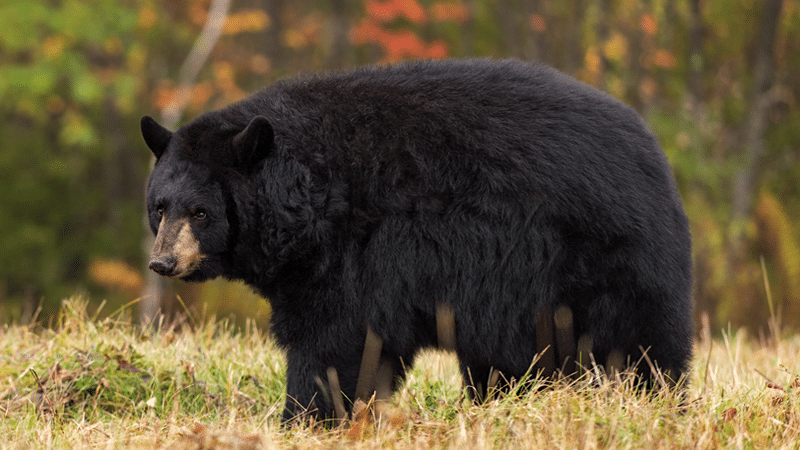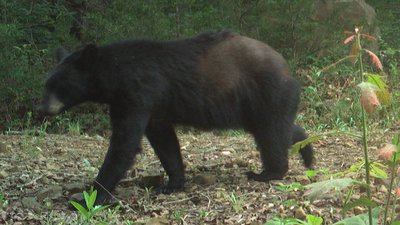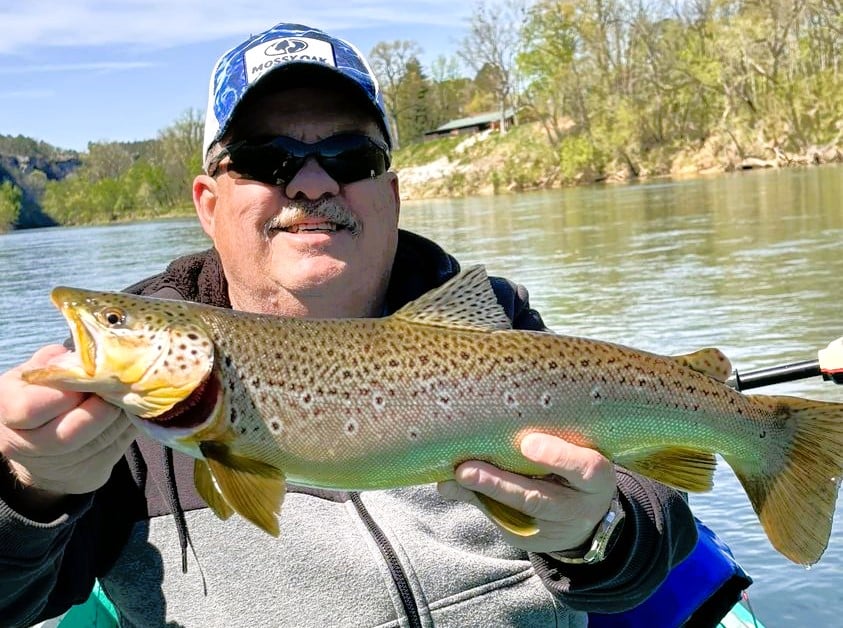Bear hunters needed to provide research samples
ON 10-13-2021

Oct. 13, 2021
Randy Zellers
Assistant Chief of Communications
SPRINGDALE — The Arkansas Game and Fish Commission is asking anyone who harvests a bear in the Ouachita Mountains or Ozarks to consider helping collect valuable samples from their bear to help research an increased occurrence of mange in the Ozark bear population.
According to Myron Means, bears in Arkansas have not had any reported cases of mange until 2018. That year, four cases were documented in Ozarks bears. In 2019, 15 cases of mange were reported, and in 2020 that number rose to 40 reported cases. All of these cases were in bears in the Ozark Mountains of Arkansas and Oklahoma.
“This year, we’ve already received 40 reports from hunters, biologists and wildlife watchers,” Means said. “So far, it’s only in the Ozarks, so we’re developing a plan to research possible factors that may be contributing to the problem.”

Means says the mites that cause mange in bears are common on bears, but they rarely cause any issues.
“Sarcoptes scabies is the mite that causes bear mange, and it’s been around ever since bears have been around,” Means said. “The bear’s immune response usually allows it to live without seeing too many harmful effects from the mites, but something seems to have changed with some bears in the Ozarks.”
Dr. Jenn Ballard, state wildlife veterinarian for the AGFC, says research is needed to determine any underlying cause contributing to the apparent increase in cases seen recently.
“Toxins, viruses and other environmental factors may be increasing the frequency of clinical mange, or it could be a new form of the mite,” Ballard said. “In the west, bobcats that are exposed to rodenticides in the animals they eat have been documented as having increased occurrence of clinical mange.”
Similar toxins responsible for weakening the bear’s immune system could be detected in samples of livers from bears taken by hunters. Hunters who take a bear, whether it has mange or not, can submit a 3-inch by 3-inch square of the bear’s liver to help with this research. The sample can be placed in aluminum foil or a zip-sealed bag and kept in a freezer until arrangements can be made to drop it off at an AGFC regional office.
Not only do Ballard and Means want samples from bears that have mange, they also want samples from bears that do not exhibit the parasite. Bears from the Ozarks as well as the Ouachitas also are important for the study.
“So far the Ouachita population has not exhibited the same rate of mange, so we want hunter-harvested bear samples from there as well to compare to the Ozarks bears,” Ballard said. “Other states, namely Pennsylvania and Virginia, have had studies on bears with mange as well, but we are looking to see if what is happening here is similar.”
Samples of skin taken from bears with obvious mange also are needed for analysis.
“We want to do genetic analysis of the mites that cause mange in different species,” Ballard said. “If a hunter harvests a bear with obvious mange, they can collect a 3-inch square of the skin at the edge of the affected area, close it in a zip-sealed bag and submit it for testing as well.”
Anyone who sees a bear with obvious mange or any bear in poor condition also may report it to the AGFC’s wildlife health email at agfc.health@agfc.ar.gov with a location. Even if biologists cannot find the bear after the initial sighting, they can keep a record of these locations to watch for future outbreaks of mange and act accordingly.
Recent News

Arkansas Wildlife Weekly Fishing Report
Apr. 18, 2024
Subscribe to Our Weekly Newsletter E-mails
Don’t miss another issue. Sign up now to receive the AGFC Wildlife Weekly Newsletter in your mailbox every Wednesday afternoon (Waterfowl Reports are published weekly during waterfowl season and periodically outside the season). Fishing Reports arrive on Thursdays. Fill in the following fields and hit submit. Thanks, and welcome!

